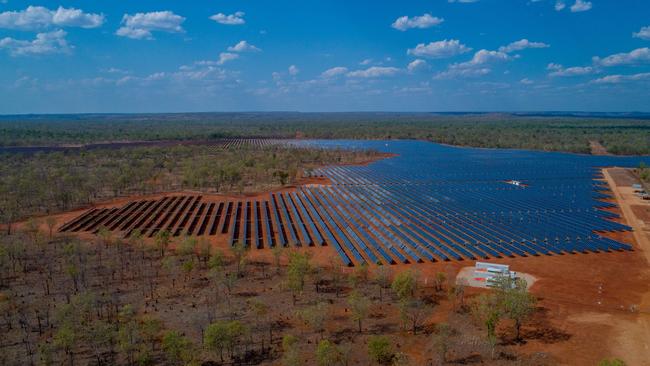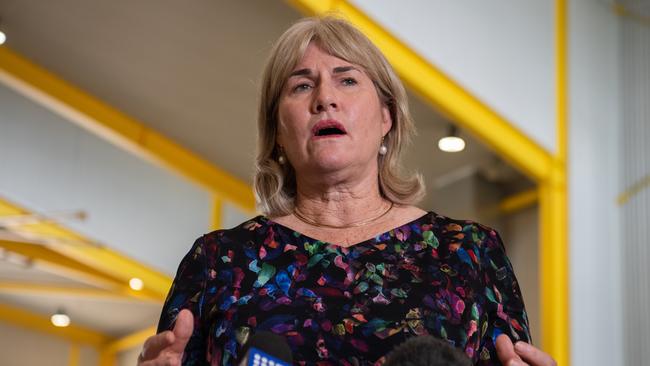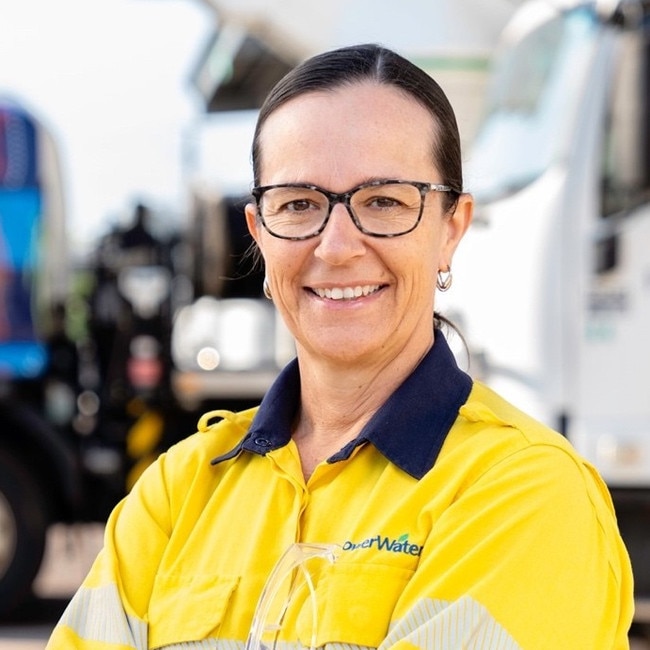Northern Territory renewables: TGen may compensate if assets are forced down or off in future
Territory Generation is sounding out the market for new solar, and maybe wind, operators to set up shop locally in a bid to meet 2030 targets – and they’ve offered a new sweetener not present previously.

Business
Don't miss out on the headlines from Business. Followed categories will be added to My News.
Territory Generation is sounding out the market for new solar, and possibly wind, operators to set up shop locally in a bid to meet 2030 renewables targets – and they’ve offered up a new sweetener not present previously.
Despite the troubles faced by Territory’s four existing utility-scale solar farms, the NT Government via government business enterprise TGen has returned to the well once more.
And it has now added a new safety net for proponents of future renewables projects, possibly in response to the stranding of the four existing farms, which were ordered by the Utilities Commission post their 2020 construction to introduce expensive forecasting capabilities.
Future proponents that include “additional storage” – such as co-located battery systems – would potentially be reimbursed by TGen if system operator Power and Water Corporation was forced to ramp down or switch off the assets in order to maintain the grid’s balance.
“For the purpose of assessing commercial risk, proponents may assume TGen will be responsible for residual curtailment risk not addressed with storage,” the energy producer said in its ‘Market Sounding - Northern Territory Renewable Energy Generation and Long Duration Storage Solutions’ guidelines.
A TGen spokesman denied this amounted to a blanket guarantee.
“Terms and conditions will be negotiated on a case-by-case basis,” he said.

The spokesman said the market sounding exercise was an “information gathering exercise that will provide key insights into technology suitability, procurement strategies, and project delivery methods for Territory Generation’s participation in renewable energy in the Northern Territory”.
While solar is expected to provide the lion’s share of future renewables capacity, the call-out is also open to wind proponents, with TGen’s guidelines including Tennant Creek and Alice Springs wind data.
While a previous report by Desert Knowledge found that the wind resource in Alice Springs was generally poor, it noted that wind could be a viable part of the energy mix, as it would feed into the grid at times when the sun was not shining.
TGen’s sounding of the market follows on from another government business enterprise, electricity retailer Jacana Energy, tendering for three new solar farms with a combined capacity of 100MW.

A Jacana spokeswoman previously told the NT News the utility continued to consider the approximately dozen proposals it received.
Meanwhile, the NT Government continues to maintain its silence on when the four stranded solar farms at Batchelor, Manton Dam and Katherine may be able to produce electricity at close to their peak capacity.
Chief Minister Eva Lawler previously conceded it was possible that the three Jacana-contracted solar farms, owned by ENI Australia, could be nationalised.
The fourth is owned by Merricks Capital and contracted to Rimfire Energy.
With five-and-a-half years until 2030, the point at which the Territory is expected to produce 50 per cent of its electricity via renewables, the government needs to facilitate new generating capacity at a blistering rate to meet its target.
The Darwin-Katherine Interconnected System would need to generate 450–550GWh per annum from renewables in order to reach the benchmark.
According to figures provided by Power and Water executive general manager for power services Belinda Small, in the week of March 11–17, approximately 4.6GWh was generated from renewables in the Darwin-Katherine system: an annualised rate of 239.2GWh, about half what will be needed.





